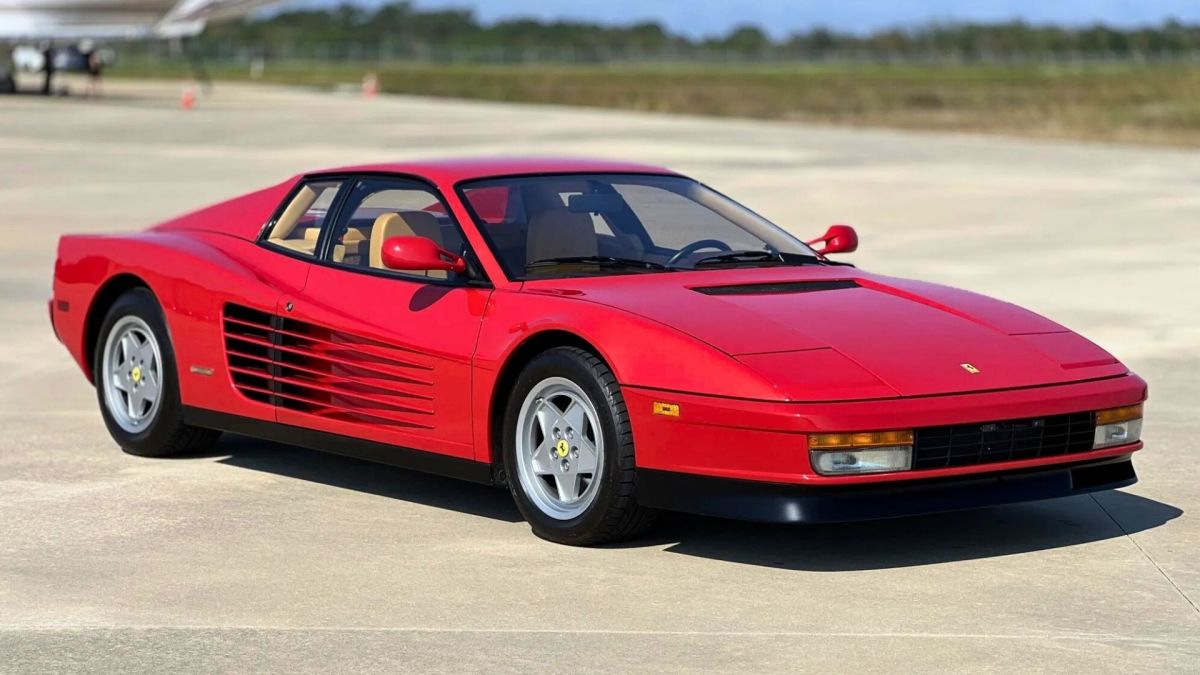Key Takeaways
- Ferrari has trademarked the name “Ferrari 849 Testarossa,” suggesting a potential new model.
- Speculation surrounds whether the revived Testarossa will feature a mid-mounted flat-12 engine or a modern alternative.
- Interest in tribute models, such as an F40 remake, raises the possibility of a similar approach with the Testarossa, appealing to nostalgia and performance.
Ferrari Trademarks ‘Ferrari 849 Testarossa’
Ferrari has recently made headlines by winning back the rights to the iconic Testarossa name after years of legal disputes. They have quickly acted on this trademark, as a filing discovered in Iceland reveals plans to protect the title “Ferrari 849 Testarossa.” Given Ferrari’s contemporary naming conventions, characterized by a mix of letters and numbers (like the 812 Superfast and 296 GTB), this move could signal the development of a new vehicle.
Amidst swirling theories, there’s hope that this new Testarossa won’t merely be a rehash of existing models. Enthusiasts dream of a car that retains the original’s distinctive mid-mounted flat-12 engine configuration. The recent Daytona SP3 has shown that such engineering is feasible. If Ferrari aims to honor a name as beloved as Testarossa, it might do so through an ultra-exclusive model within its Icona Series. Nonetheless, the manufacturer has also introduced the F80, illustrating that a 12-cylinder engine isn’t mandatory for its top-tier offerings. As such, a V6 could also be justified in the modern context, drawing parallels to the original flat-12’s compact structure.
Beyond engine specifications, the Testarossa name has broader implications; “Testa Rossa,” meaning “red head,” could be applied to any Ferrari variant featuring crimson elements—much like its predecessor, the 250 Testa Rossa.
Ferrari’s historical approach typically veers away from directly referencing the past. While many current designs are inspired by older models, they usually stand independently. Still, recent conversations have suggested an openness to modern interpretations of classic cars. Notably, Sir Lewis Hamilton, a key figure in Ferrari’s Formula One lineup, has proposed the idea of an updated F40, potentially dubbed the F44, emphasizing the desirability of manual transmissions for select high-end models.
While all of this remains speculative, the notion of reviving noteworthy lineages like the Testarossa aligns with the increasing interest in unique, engaging driving experiences among performance enthusiasts. As hypercars become more extreme, slow and sophisticated editions may be an avenue Ferrari explores. In a recent interview with Evo, the company advised collectors to invest in and restore vintage Ferraris for a manual experience, hinting at the idea that under the right circumstances, manual transmissions could make a comeback, especially for a reimagined Testarossa.
The content above is a summary. For more details, see the source article.















